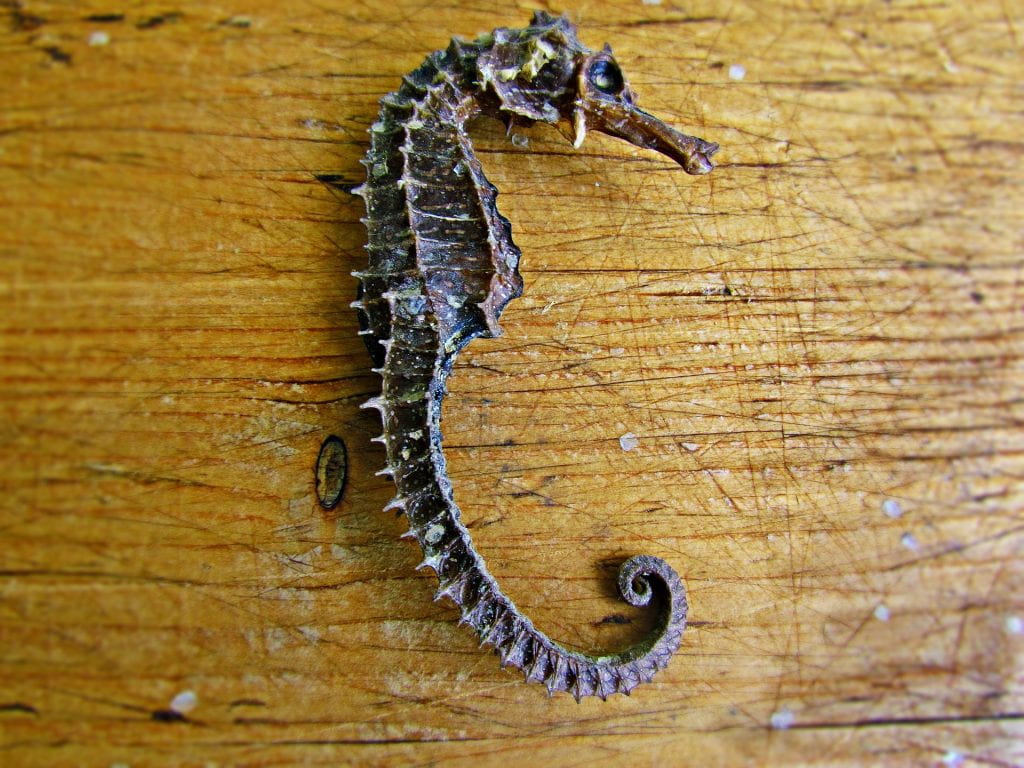Last week saw the celebration of the UN ‘World Wildlife Day’. The date, March 3rd , was so chosen to honour the ratification of the Convention on International Trade in Endangered Species of Wild Fauna and Flora (CITES) in 1973. Though this year’s theme was on ‘Forests and Livelihoods’ instead of Oceans, the watery neighbours of forest multispecies environments are also home to an abundance of wildlife that deserve our celebration as well. Yet the signing of the global convention to protect wildlife, now almost half a century ago, has not managed to completely stop trade and overfishing of endangered species in the Pacific and beyond. Many species fall victim to illegal activities, but there is one that crops up again and again as a mass-fished commodity along the Peruvian coast- the seahorse (or, as marine biologist Helen Scales has playfully called them, ‘Poseidon’s steed’). But why should we be interested in this particular animal when considering multi-national relations across the Pacific? In answer to this, it is not necessarily just the seahorse itself that is of interest, but the multinational relationships within which it becomes entangled. In this instance, between Peru and China.
In the increasing attention paid to Peru’s Pacific mega-fauna, including the imposing humpback whale, manta ray, and green turtles, the more diminutive figure of the Pacific seahorse may be overlooked. Human-shy and certainly not capable of attracting anywhere near the same tourist dollars as the mega-fauna for their dearth of appearances, seahorses have instead been exploited for another economic motive along Peruvian shores; they are illegally caught, dried, and exported to Asian markets. The quantity seized by port authorities has steadily grown over the last decade, from 16,000 in 2012, to 8 million in 2016, to an astonishing 12.3 million in 2019, making Peru the second largest exporter of Pacific seahorses in the world, second only to Mexico.

Due to destruction of marine habitats, direct and by-catch, the Pacific seahorse makes it onto the CITES IUCN (International Union for the Conservation of Nature) red list as a vulnerable species. Though it is illegal to fish seahorses in the Peruvian Pacific, this practice continues unabated on an apparently enormous scale. Illegal fishing in itself is an important and relevant topic of enquiry for imaginaries of the Pacific and coastal community cultures, however seahorses in particular hold a specific interest when thinking about the international connections involved in maritime relationships, and how these may change with the ongoing development of geopolitical considerations.
So why are seahorses caught and dried in Peru in the first place, if not for domestic use? The short answer is that they hold a special value for the export market, and it can be profitable for fisherman to source them even at the risk of being caught and sanctioned. Principally, seahorses are sent to Asian countries where they are in high demand as an ingredient for use within Traditional Chinese Medicine (TCM). On the motivations behind this use, Kumaravel et al. (2012) write that:
“Seahorses, a syngnathidae fish, are one of the important candidate organisms which have been used in Chinese traditional medicine from time immemorial. It is believed that seahorses have the potential to cure infertility, baldness, asthma and arthritis”.
Whether or not these claims are scientifically substantiated is a matter of ongoing debate, however it is the relationship between the export and import countries, and medicine, that is of greater interest here. What do Peruvians think about the depletion of an endangered species living within their waters, in order to satisfy a foreign demand for medicinal benefit that may never reach Peru itself? What is the Peruvian perception of Chinese medicine and relationships with China more generally?
Undoubtedly these are all pressing questions that would have been worthy of exploration when the very first illegal vessel carrying dried seahorses was seized. But now, in a pandemic-era Pacific, the question may become more complicated still as it has been China and Chinese-developed vaccines that are leading the way in Peru.

Peru was one of the countries originally enrolled for China’s Sinopharm vaccine trial, hinting at an increasingly strengthening relationship between these neighbours across the Pacific. With an order of 38 million doses, Peru’s largest vaccine purchase, Sinopharm will now make it into the arm of a significant number of Peruvians. Putting the ‘vaccinegate’ scandal in which politicians and their relatives clandestinely jumped the vaccine queue to one side, the fact that Peruvians will rely on Chinese-produced inoculations to combat the pandemic might lead us to wonder how the Peruvian public views on medicine and China might develop. On this, we might query whether TCM might become more favourably viewed in the country following the Sinopharm rollout. If so, what might this mean for the seahorse (and perhaps, other marine animals used in TCM such as manta rays)? Might their protection be overlooked in order to maintain and nourish medically-minded international collaborations?
Interesting questions indeed, and though they are not to be answered here, it may be worth keeping a close eye on the entanglements of marine life, exports, and changing pan-pacific relationships as pandemic-influenced geopolitics influence international relationships.
Images from Pixabay

